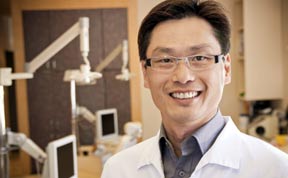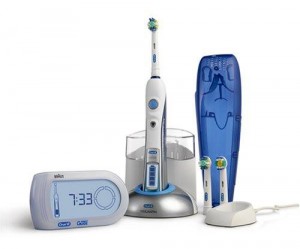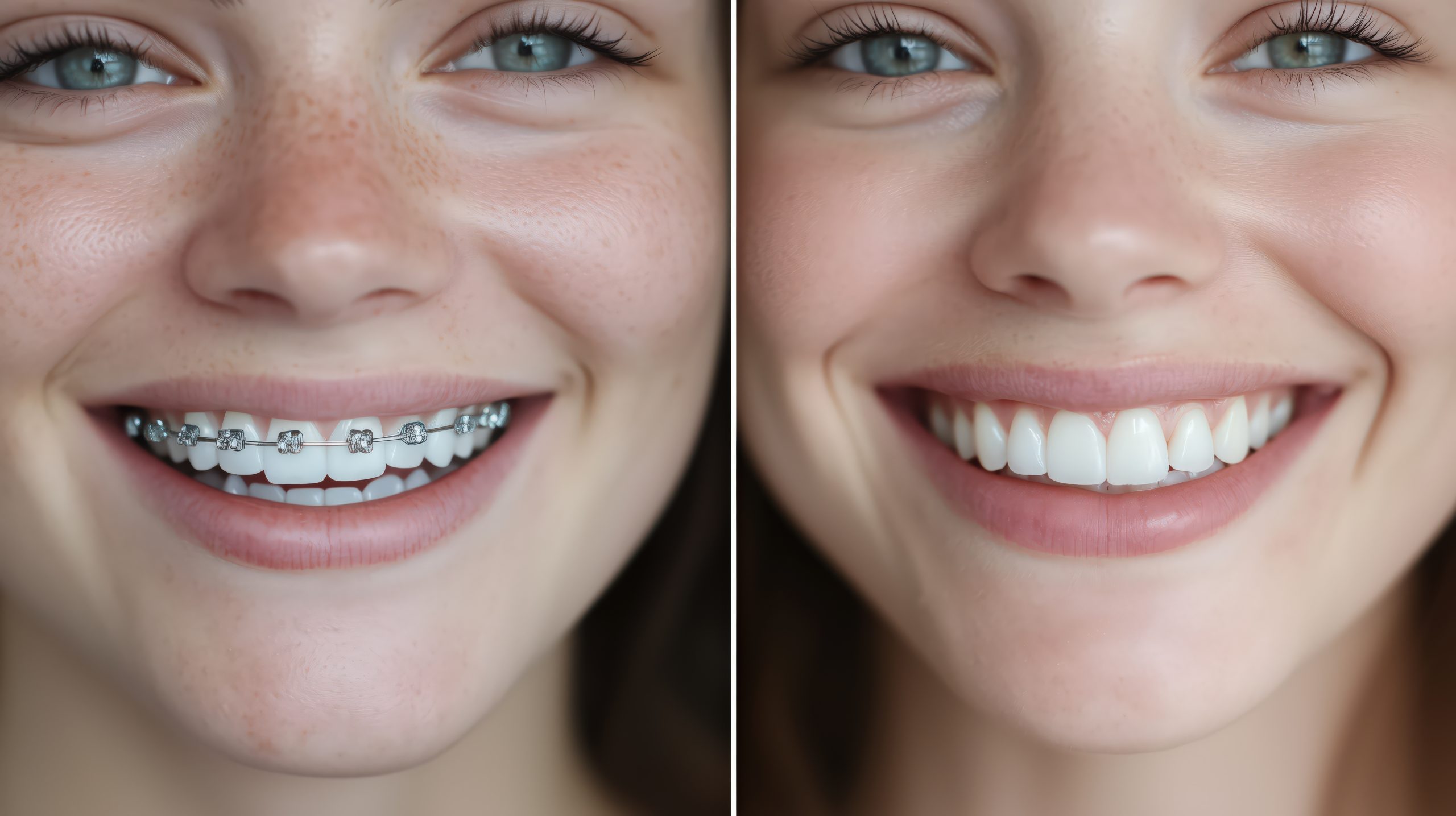
The constant irritation gave me raw spots on the mucosa of my mouth. This skin irritation was an annoyance that was minor and lasted only for the first month.
Further to that, I had to learn to eat with the braces, since if I chewed hard on foods, I would hit some of the braces too hard and break them off. It is amazing how your body adapts to these needs, since you cannot remove the braces, I was able to adjust the pressure that I applied with each bite so that I would not bite too hard to break my braces, but hard enough to chew my food.
The proprioceptive(pressure sensing) receptors built into my teeth gave instant feedback to my bite pressure, and by training, my muscles developed the proper muscle memory so that during each subsequent bite, the pressure was just right.
The next adjustment I went through was the fact that I frequently bit on my lip when I chewed. This was a much more painful experience and one that took me longer to get over. During your chewing cycle, your lips, cheeks, and tongue have been trained to move the bolus of food that is in your mouth around and onto the biting surface of your teeth.
Your lips have to provide an additional function, that is they also have to keep your food, and especially the liquids in your mouth from being squeezed out of your mouth, onto your chin, and your clothes. Your eating partners especially appreciate this function, since seeing your food coming out of your mouth is hardly neither appealing nor appetizing.
My problem with my lips is that they frequently got caught on my lower braces in Vancouver during chewing and made cuts on my lips that are very painful. Luckily, wounds in your mouth heal much faster than on your skin, and after a few months, my lip muscles also adapted to their new functional parameters.

A normal cleaning regimen does not do a thorough job. Even with proper tools and good dexterity, the cleaning process is tedious and takes a long time. That is why in our clinic, we stress good oral hygiene practice from day one of your orthodontic treatment.
On the day of getting your braces, we spend time teaching you how to clean your teeth properly. We also provide tools that will help speed up the cleaning time. One of those tools is an electric toothbrush.
I have always told my patients that if brushing is done properly, a manual toothbrush is as good as an electric toothbrush. However, it does take better coordination and more diligence to achieve a proper cleaning with a manual toothbrush.
So we provide an electric toothbrush with your orthodontic treatment in Vancouver to help you with this important task. The following is a scientific study that demonstrates the advantages of using an electric toothbrush for most people.
Introduction
Good oral hygiene is a challenge for orthodontic patients in Surrey because food readily becomes trapped around the brackets and under the archwires, and appliances are an obstruction to mechanical brushing. The purpose of this study was to compare the plaque removal efficacy of 3 toothbrush treatments in orthodontic subjects.
Methods
This was a replicate-use, single-brushing, 3-treatment, examiner-blind, randomized, 6-period crossover study with washout periods of approximately 24 hours between visits. Forty-six adolescent and young adult patients with fixed orthodontics from a university clinic in Germany were randomized, based on computer-generated randomization, to 1 of 3 treatments:
(1) oscillating-rotating electric toothbrush with a specially designed orthodontic brush head (Oral-B Triumph, OD17; Procter & Gamble, Cincinnati, Ohio)
(2) the same electric toothbrush handle with a regular brush head (EB25; Procter & Gamble)
(3) a regular manual toothbrush (American Dental Association, Chicago, Ill). The primary outcome was the plaque score change from baseline, which we determined using digital plaque image analysis.
Results
Forty-five subjects completed the study. The differences in mean plaque removal (95% confidence interval) between the electric toothbrush with an orthodontic brush head (6% [4.4%-7.6%]) or a regular brush head (3.8% [2.2%-5.3%]) and the manual toothbrush were significant (P <0.001). Plaque removal with the electric toothbrush with the orthodontic brush head was superior (2.2%; P = 0.007) to the regular brush head. No adverse events were seen.
Conclusions
The electric toothbrush, with either brush head, demonstrated significantly greater plaque removal than the manual brush. The orthodontic brush head was superior to the regular head.
This study and other similar helpful articles can be found on the American Association of Orthodontists website. Proper care for your teeth will not only help you with good healthy teeth and gums during your orthodontic treatment but will also promote good oral hygiene habits that will last a lifetime.
After all, with your orthodontic treatment, you will be rewarded with straight teeth and a great smile, why not keep that picture-perfect smile for a lifetime?
Every time you visit your orthodontist, they will check your teeth for proper cleaning, but you will still need to visit your family dentist regularly for professional cleaning and check-ups to avoid unwanted decay or disease to your teeth and gums.

Hello! I’m Dr. Kevin Lee, a certified orthodontic specialist at PacificWest Dental Group, proudly serving the vibrant communities of Vancouver and Surrey. My journey into orthodontics began back in high school. As a teenager wearing braces, I became fascinated by the intricate blend of art, engineering, and biology that defines this field. This early experience ignited a passion that has guided me throughout my career.
I pursued my academic journey at the University of British Columbia (UBC), where I earned a Bachelor of Science in Biochemistry in 2006, followed by a Doctor of Dental Medicine in 2011. After a year-long residency at Montefiore Medical Center in New York, I returned to UBC to complete a combined Master of Science in Craniofacial Biology and a Diploma in Orthodontics in 2015. That same year, I achieved certification from both the Royal College of Dentists of Canada and the American Board of Orthodontics.
With over a decade of clinical experience, I remain deeply committed to staying at the forefront of orthodontic advancements. At PacificWest Dental Group, we prioritize personalized treatment plans tailored to each patient’s unique needs, ensuring comfort and care every step of the way. Our goal is to help you achieve the smile you’ve always dreamed of in a welcoming and supportive environment.
Outside the clinic, I enjoy engaging with our community and staying active. Whether it’s through local events or outdoor activities, I believe in building strong relationships both inside and outside the office. I look forward to meeting you and working together to create a beautiful, confident smile.
Services we provide:
-Invisalign
-Braces
-Lingual Braces
-Digital treatment planning
-TMJ and headpain treatment
-Laser Therapy
-Sleep Apnea Oral Appliance
-Dysport Cosmetic Injectables





